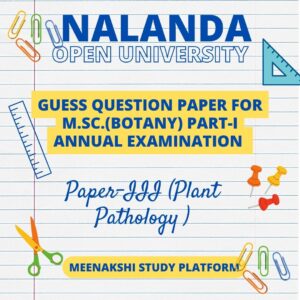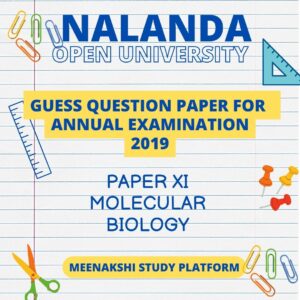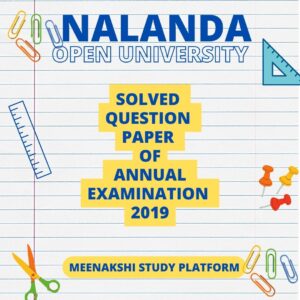Description
M.Sc. (Zoology) Programme
(MSCZOO)
ANIMAL BEHAVIOUR AND ANIMAL WELFARE
ETHICS
Valid from 1st January, 2025 to 31st December, 2025
ASSIGNMENT
(Tutor Marked Assignment)
Course Code: MZOE-002
Assignment Code: MZOE-002/TMA/2025
Maximum Marks: 100
Note: Attempt all questions. The marks for each question are indicated against it.
1. a) According to Nikolaas Tinbergen, what are the four salient questions
that should be asked while studying a behaviour?
b) What are instinctive behaviours? Give suitable example for the same.
(5)
(5)
2. a) Explain Tolman’s experiment and its results.
b) List the three main components of a feedback loop system.
(5)
(5)
3. a) Explain the important characteristics of social insects.
b) Give any four examples of altruistic behaviours.
(6)
(4)
4. Write short notes on:
i) Post-insemination mate guarding
ii) Evolutionary importance of sexual dimorphism
iii) Reproductive fitness
(10)
5. What is parental manipulation? Describe various ways in which parents
manipulate their progeny.
(10)
6. Consider a dairy cow kept tethered all day, with food and water but without
access to other cows. Describe the welfare of this animal from the perspective
of her a) biological function, b) naturalness and c) feelings.
(10)
7. a) Explain the main frameworks currently used to determine animal
welfare requirements.
b) Animals can experience fear and distress from their interactions with
humans. Discuss the ways to help animals to minimize fear responses.
(5)
(5)
8. a) How can animal welfare assessment be used for continuous
improvement in animal welfare?
b) What are the differences between requirements of welfare legislation
and Codes of Practice?
(5)
(5)
9. a) Write three important signals that dogs give as a threat before they
attack.
b) Describe how some negative consequences of past selection strategies
have been reversed by changing the breeding strategy itself.
(3)
(7)
10. a) How do contractarian views differ from utilitarian ethical views?
b) Discuss the application of relational ethical thinking to our treatment of
the rabbit in different contexts.











Reviews
There are no reviews yet.